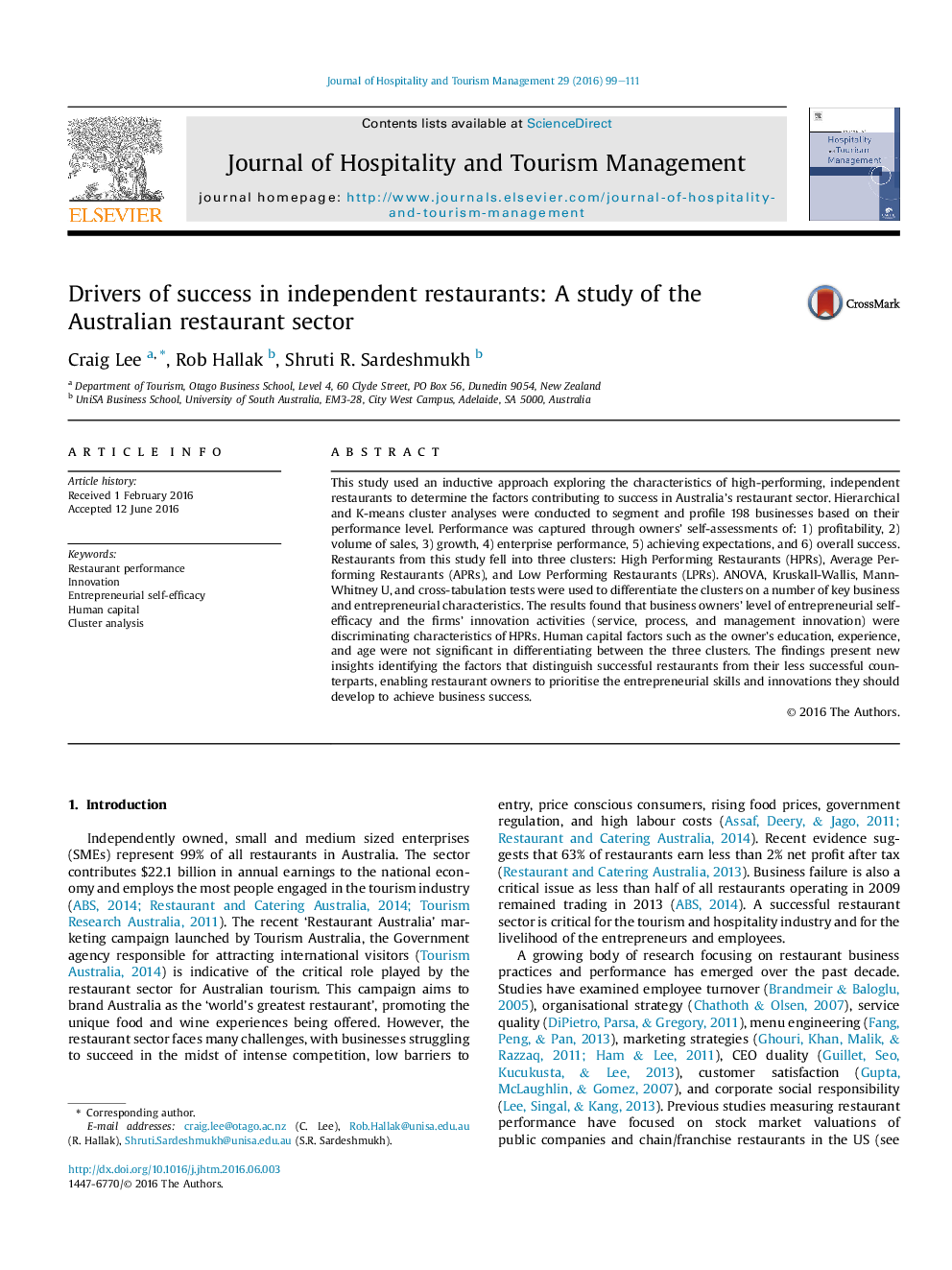| Article ID | Journal | Published Year | Pages | File Type |
|---|---|---|---|---|
| 1011356 | Journal of Hospitality and Tourism Management | 2016 | 13 Pages |
This study used an inductive approach exploring the characteristics of high-performing, independent restaurants to determine the factors contributing to success in Australia’s restaurant sector. Hierarchical and K-means cluster analyses were conducted to segment and profile 198 businesses based on their performance level. Performance was captured through owners’ self-assessments of: 1) profitability, 2) volume of sales, 3) growth, 4) enterprise performance, 5) achieving expectations, and 6) overall success. Restaurants from this study fell into three clusters: High Performing Restaurants (HPRs), Average Performing Restaurants (APRs), and Low Performing Restaurants (LPRs). ANOVA, Kruskall-Wallis, Mann-Whitney U, and cross-tabulation tests were used to differentiate the clusters on a number of key business and entrepreneurial characteristics. The results found that business owners’ level of entrepreneurial self-efficacy and the firms’ innovation activities (service, process, and management innovation) were discriminating characteristics of HPRs. Human capital factors such as the owner’s education, experience, and age were not significant in differentiating between the three clusters. The findings present new insights identifying the factors that distinguish successful restaurants from their less successful counterparts, enabling restaurant owners to prioritise the entrepreneurial skills and innovations they should develop to achieve business success.
